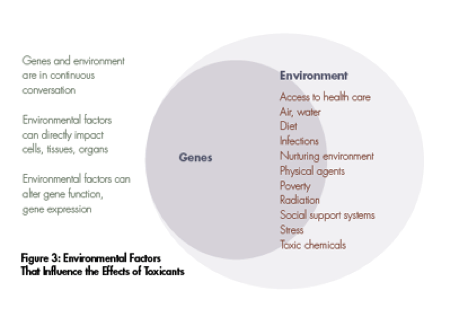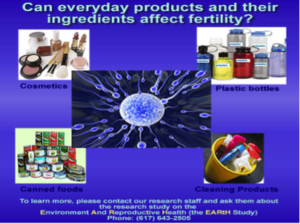Environment – Another Enemy of Fertility?

To reproduce is human progress, but how and when, lots of reasons are still unrevealed, the more we progress at one level, the more we come across unbeaten and unsolved issues, which are not easy to eradicate.
Scientists are struggling to neutralize the ill effects of environmental factors affecting all of us especially when it comes to fertility. Some of them are deliberately becoming a part of our lifestyle and not easy to avoid. Decrease in Human fertility and level of reproduction stated in literature as:
- Increasing % of impaired fecundity by age.
- Declining male testosterone levels (TRAVISON et al J. of Endrocrine Metabolism 2006).
- Increasing incidents of testicular cancer (SHAH A et al J. of Andrology in 2007).
- Decreasing age of puberty (EULING A et al J of Paediatrics 2000)

The changes responsible are proven to be:
- Environmental (Chemicals, toxins)
- Nutrition.
- Emerging old and starting new STD.
- Behavioural factors.
- Interaction among these factors.
According to WHO estimate over 80 millions infertile couples worldwide are described as having:
A. Core Infertility: – % of these couple as a result of conditions that cannot be changed, prevented, or even known at times.
B. Acquired infertility: where causes found in the community as health issues and can be prevented (FATHALLA. M 1990 Fertility Overview)
Environmental factors
Toxins
- Adverse effects of some common environmental toxins like pollutants and pesticides.
- DDT/DDE :(pesticide) DIBROMOCHLOROPROPANE.
- Decrease fertility, impair lactation, increases the chances of small fordate babies, it also decrease the semen quality.
- POLYCHLORINATED BIPHENYLES (PCB): Causes impaired response to ovulation induction leading to infertility. (Oxford Journal)
- Increase in chemicals production followed by dumping of the residues with lethal toxins is leading to human tragedies (eg Hiroshima Nagasaki Japan).
 Exposure to DES (diethylstilbestrol) leading to uterine anomalies and impaired fertility. Most of the cosmetics /aromas/perfumes has phthalates decrease serum testosterone, damaging sperm quality in males,decreasing thyroid function and stimulates the growth of breast cancer cells.
Exposure to DES (diethylstilbestrol) leading to uterine anomalies and impaired fertility. Most of the cosmetics /aromas/perfumes has phthalates decrease serum testosterone, damaging sperm quality in males,decreasing thyroid function and stimulates the growth of breast cancer cells.
Small doses of naturally produced hormones control communication and coordination of body tissues but in factory production of hormones is through specific ingredients, which disturbs the message to the cells leading to unexpected responses and diseased cells.
Addictions
Tobacco & Alcohol
In males:
Decreases sperm production, motility, morphology and causes DNA damage thereby reducing fertilizing capacity.
In females:
Decrease rate of conception due to increase thickness of egg shell (zona pellucida), negative effects on follicular micronutrients, and hormonal levels of luteal phase
Increase in miscarriage rate ,high risk of ectopic pregnancy ,negative effects on growing fetus and early menopause are also documented.(Stuart GK1998,BouyerJet al Am.J.epidemiology 2003)
Passive smokers show an increase in serum nicotine levels in the age of 4-19 as high as 68 to 80%.
TEMPERATURE
Occupational hazards for welders, firefighters and ceramic workers are higher as environmental temperature has proven its direct damaging effect on male infertility.
RADIATION
Already well established data on the ill effects of ionizing radiation on male and female fertility is leading to cryo preservation of gametes /ovarian tissue prior to any chemo or radiotherapy. In a comprehensive review of the published scientific literature, the Environmental Working Group found 10 human studies that have identified a startling variety of changes in sperm exposed to cell phone radiation. (La Vignera 2012) and laptops usage on lap for long hours.
Among the findings:
• A phone in a hip pocket or on the belt had 11 percent fewer motile sperm than men who kept a phone elsewhere on the body (Kilgallon 2005).
• Cell phone on the belt and used it intensively during a five-day test period had a 19 percent drop in highly motile sperm from their previous levels (Davoudi 2002).
• Talking on the phone for more than an hour a day had 17 percent fewer highly motile sperm than men who talked less than 15 minutes a day (Fejes 2005).
• Laboratory studies on the effects of cell phone radiation on rats, rabbits and other animals have found similar effects on reproductive health (Kesari 2011; Mailankot 2009). Researchers reported that cell phone exposure during pregnancy and after birth was associated with behavioral problems in young children (Divan 2008; Divan 2012). A recent review article emphasized that cell phone radiation might impact reproduction and development in both men and women (Merhi 2011).
STD (Sexually transmitted diseases)
Chlamydia , gonorrhea and HPV leading to pelvic inflammatory diseases and hence subfertiity (DonavanP. 1993).
Prevention is the Key strategy early detection and followed by treatment which again demands lifestyle changes avoiding obesity, addictions, and occupational hazards.
- Age of concern is adolescence, least bothered and least addressed by all corners of society
- The key to limit all the hazards and the effects of radiation, chemical toxins and environmental pollution is to improve the awareness in the society and management through healthy diet and lifestyle which should enhance immunity and sustain cell health.
How to Reduce the effects of Exposures to Toxic Chemicals?
- Don’t smoke, and minimize your exposure to second-hand smoke.
- Find out what’s in your drinking water. Prefer alkaline water
- If necessary, filter drinking, cooking and bathing water.
- Reduce your consumption of fish species containing high levels of mercury, dioxin and PCBs such as swordfish and albacore tuna. But don’t stop eating fish. Make informed choices. Consider certified contaminant-free brands of fish oil pills to get important omega fatty acids. If possible, buy organic foods.
- Wash (and peel where you can) before eating to remove agricultural chemicals they may have on them.
- Reduce or stop use of pesticides and herbicides for home, lawn, garden and pet care where possible. Try non-toxic alternatives.
- Avoid environments that have been recently treated with pesticides and herbicides.
- Depending upon the product and conditions in the environment, pesticides and herbicides have a half-life of between one day and one year.
- Exercise caution: Some candies from Mexico; some food colorings, make-up and Ayurvedic medicines from India; some Chinese herbal remedies; and some gumball toys/jewelry dispensed in the US have been found to contain lead. There are few labelling requirements and only minimal regulation of these products.
Last but not the least Social and Psychologically toxic environment is the most dangerous cause of subfertility and damages a human being in total.

About Author:
Dr. Asma Munir Ur Rahman
Specialist B Gynaecologist and Obstetrician

Very good article. Is there any study or findings published on fertility rates based on the regions they live ? For example people living in cold climatic conditions have high fertility than people in hot climates…
Also one more interesting concern is Pre- diabetes and infertility …is there any correlation or findings …